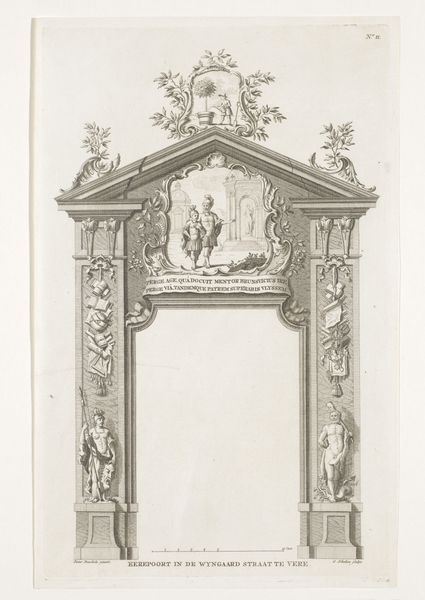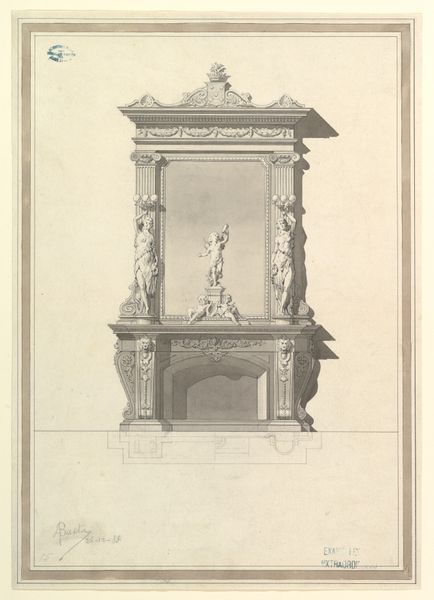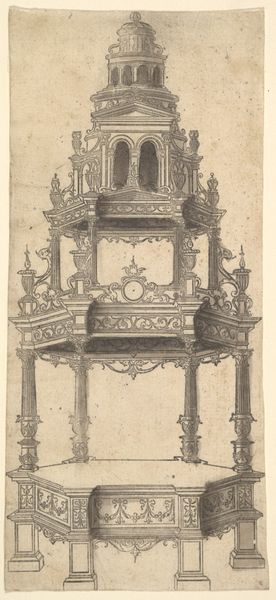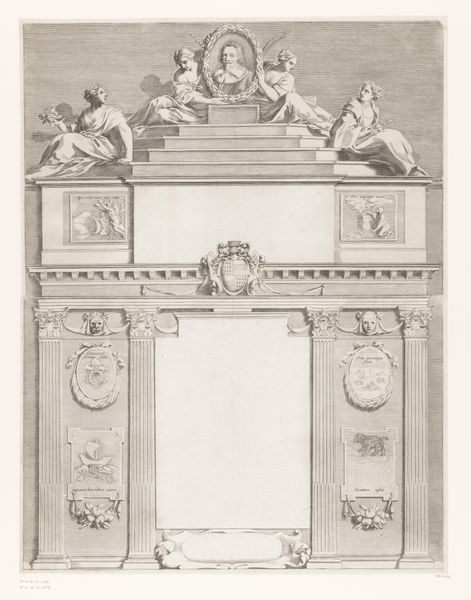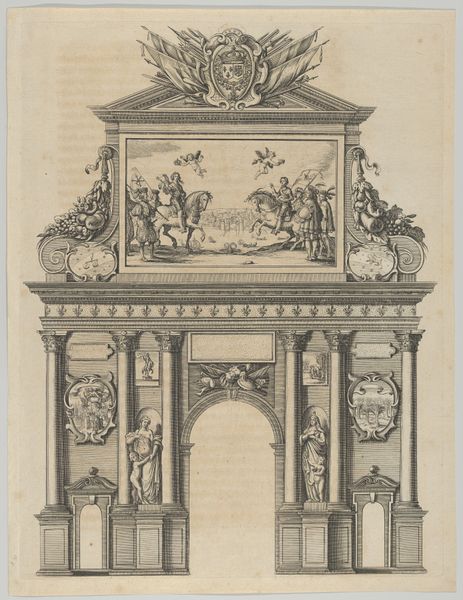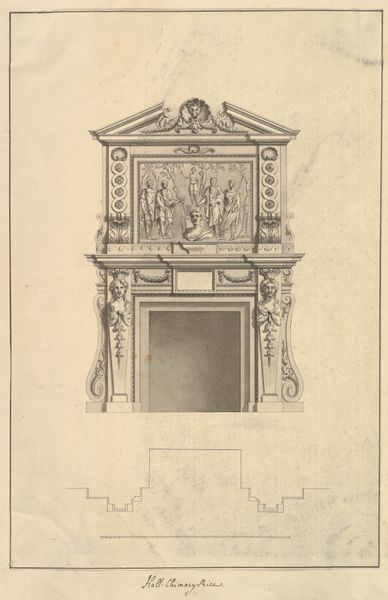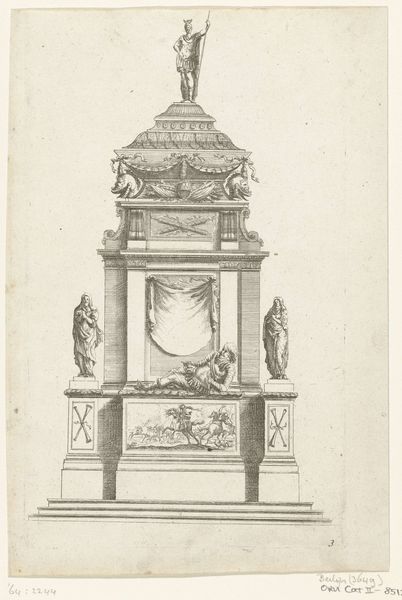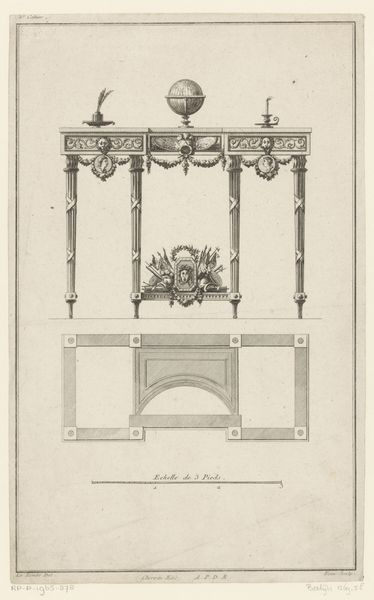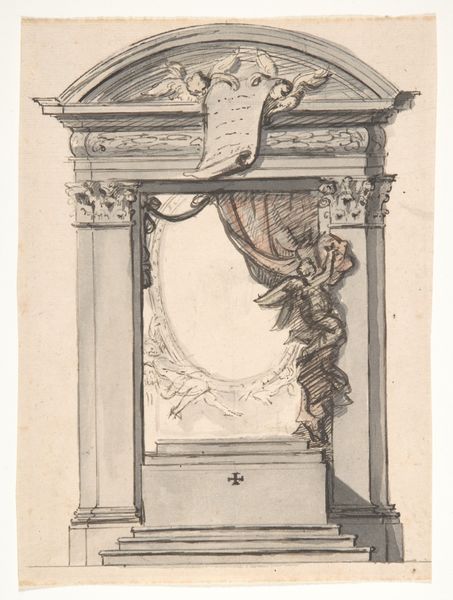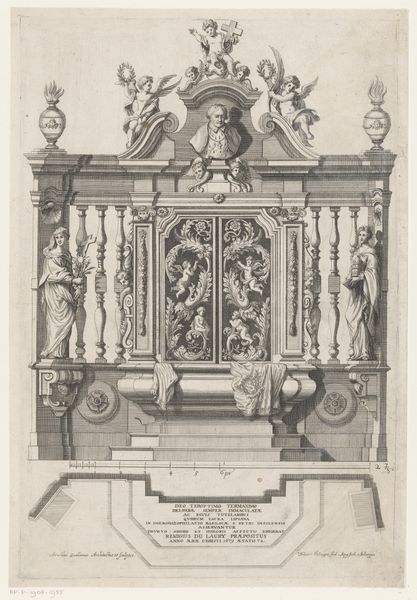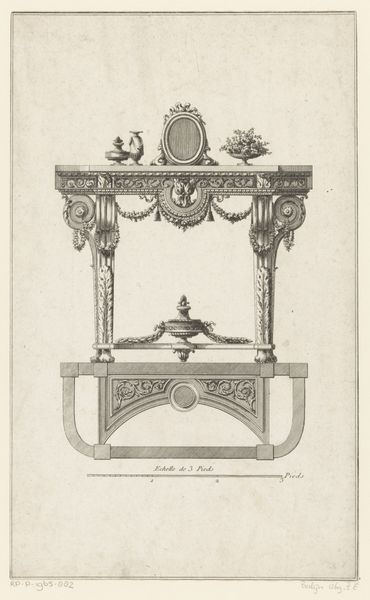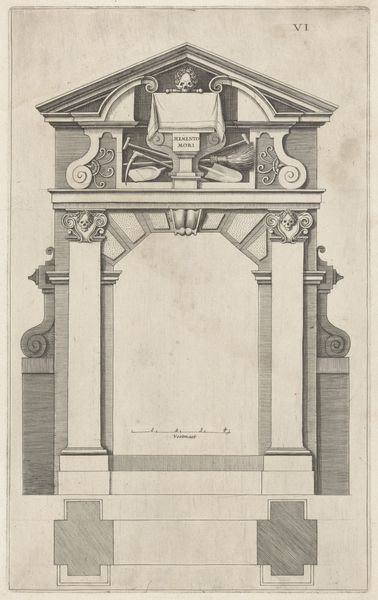
Erepoorten bij de intocht van Willem V te Veere (Nr. I), 1766 1766 - 1767
0:00
0:00
Dimensions: height 377 mm, width 237 mm
Copyright: Rijks Museum: Open Domain
Editor: This etching by Gerard Sibelius, made between 1766 and 1767, depicts "Erepoorten bij de intocht van Willem V te Veere (Nr. I)." The drawing-like quality and delicate lines give it a surprisingly intimate feel for a triumphal arch. What do you make of the elaborate symbolism, and what does it say about Dutch society at the time? Curator: Oh, I adore these ephemeral structures. Temporary architecture built to impress, flatter, and proclaim political power. They’re pure theatre, aren't they? Notice the aged paper; it whispers stories, almost like faded memories of grand celebrations and forgotten rulers. What do you think about the crisp precision of the etching? Editor: I see the care that went into each line and flourish. Curator: Precisely! It’s more than just a drawing. This wasn't some doodle in a sketchbook, was it? Every symbol, every curve of the arch was laden with meaning, carefully chosen and meticulously rendered to convey very specific ideas. The inscription… have you tried to decipher it? What is it actually saying, beyond the official pronouncements of glory? Editor: It's beyond my Latin, unfortunately! Curator: Exactly! What I find striking about these ephemeral arches, like stage sets or the memory of a performance, is how they serve as fleeting celebrations. Today, only this engraving is left behind, a subtle memento of that important procession and the people involved. Editor: So it’s both a record and a performance in itself. That gives me a whole new appreciation for it! Curator: Me too! Always so much more than meets the eye.
Comments
No comments
Be the first to comment and join the conversation on the ultimate creative platform.
